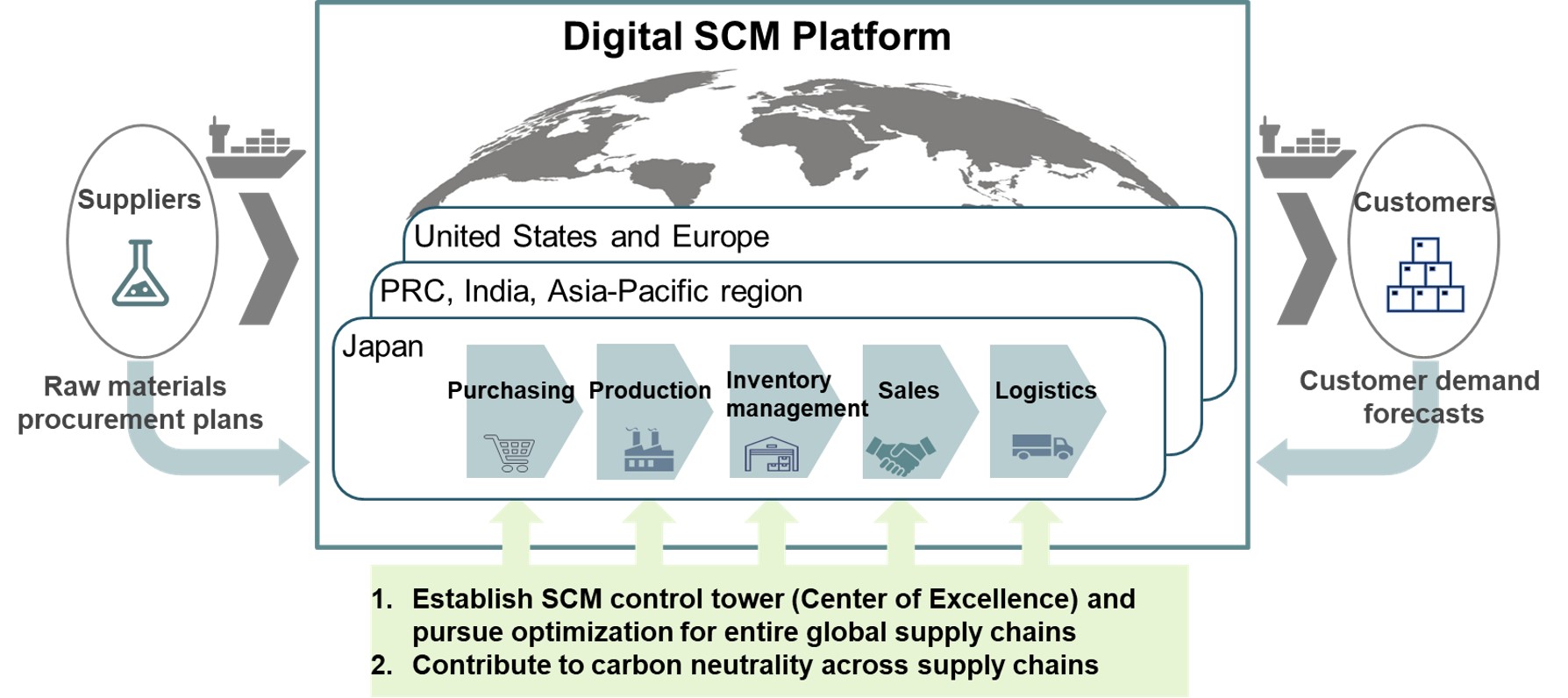DIC Corporation recently announced that it has built a new digital supply chain management (SCM) platform that leverages advanced digital technologies to optimise supply chains in its core businesses. The company initially intends to introduce the new platform in certain markets and sectors of the colour materials and performance materials businesses. Plans are to achieve full deployment worldwide by fiscal year 2025.
Owing to recent geopolitical tensions and rapid changes in the supply–demand balance driven by the COVID-19 pandemic, corporate management continues to be impacted by supply chain issues such as constraints on the raw materials procurement and the disruption of international logistics. Against this backdrop, SCM, which aims to optimise supply chains on a global basis, is taking on growing importance. With operations in more than 60 countries and territories around the world, DIC recognises that optimising and enhancing the visibility of its supply chains across multiple regions, businesses and organisations is an urgent challenge. Accordingly, one of the specific measures set forth for establishing a more robust global management, a key strategy of ‘DIC Vision 2030’ long-term management plan, is to build a global SCM standard model.
To date, planning and other supply chain–related tasks, including the collection of customer demand data, production scheduling for local plants, management of site inventories (products and raw materials) and procurement planning, have been handled independently on a regional and business-specific basis. Complex coordination with a lot of stakeholders inside and outside the company, such as frequent adjustments to delivery dates and quantities, and the management or modification of inventories, have been conducted manually at individual sites using Excel spreadsheets or through direct communication by email. This has made it difficult to ensure the accuracy and efficiency of such procedures, while also maintaining speed.
To address such matters, DIC embarked on building a global SCM standards model by its SCM development project that involved more than 80 participants from both inside and outside the company.




